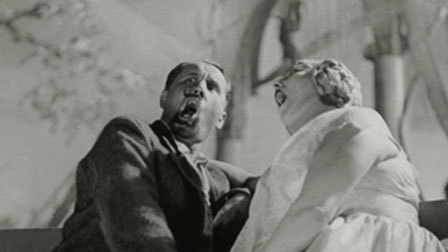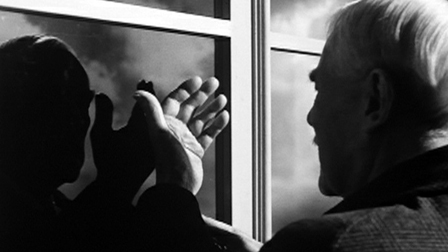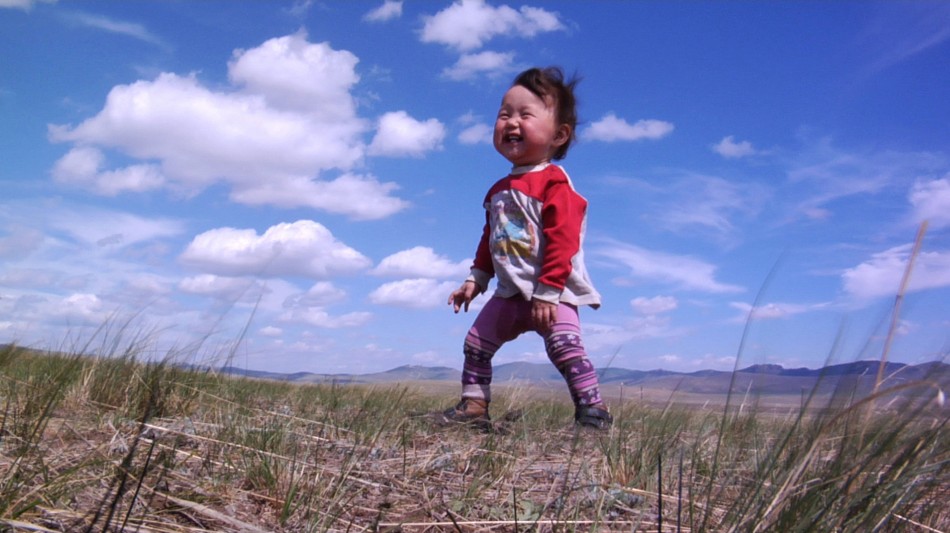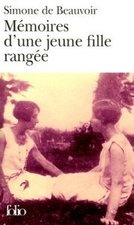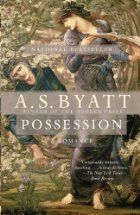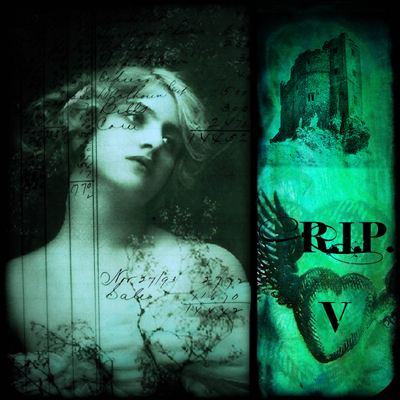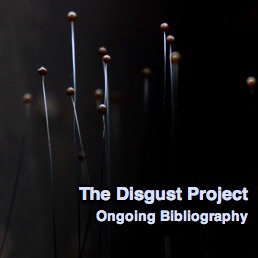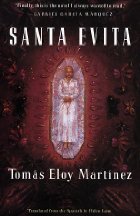
As intrigued as I was by the idea of a novel whose main character is a corpse, the parts of Tomás Eloy Martínez's Santa Evita that ended up interesting me most had almost nothing to do with its so-called plot. Because as much as Santa Evita is a novel "about" the late wife of a deposed politician (in which an ensemble cast of characters transport, steal, curse, duplicate, switch, covet, and defile the embalmed body of Eva Perón, in a non-chronological seesaw back and forth over the pivot-point of her death), it's also a playful, extended essay that meditates on the nature of storytelling itself: what makes a story "true"; when are sources "reliable"; exactly how real is "reality," and what is its relationship to text? Late in the novel, two characters have this exchange:
"As you said, it's a novel," I explained. "In novels, what is true is also false. Authors rebuild at night the same myths they've destroyed in the morning."
"Those are just words," Corominas said emphatically. "They don't convince me. The only thing that means anything are facts, and a novel, after all, is a fact."
Throughout Santa Evita, Martínez is grappling with just this question: to what extent is a novel an amorphous web of myths and legends, capable of telling "truth" only metaphorically, through a recreated web of lies? And on the contrary, to what extent is a novel a tangible, solid fact, capable of being argued with, contradicted, analyzed? To what extent can these two states coexist? At first, I assumed Martínez to be making a case for the lack of connection between reality and fiction, a case that, since a novel cannot recreate reality exactly, any wild fiction will say as much about reality as the most careful reportage. I saw him portraying the role of the author, as stated above by the character "Tomás Eloy Martínez," as someone destroying and rebuilding the same mythos over and over—a kind of impotent yet all-powerful Lady of Shalott, interacting with reality only at a vast remove. I heard him telling me not to look in his pages for a literal truth about Evita Perón, because written language can't transmit literal truth, but to seek instead for salient metaphors.
That, I thought, is where written language falls short. It can bring back to life feelings, lost time, chance circumstances that link one fact to another, but it can't bring reality back to life. I didn't yet know—and it would take longer still for me to feel it—that reality doesn't come back to life: it is born in a different way, it is transfigured, it reinvents itself in novels. I didn't know that the syntax or the tones of voice of the characters return with a different air about them and that, as they pass through the sieves of written language, they become something else.
They become "something else"—but what relation does this "something else" hold to its original model? Is it "only" the stuff of myths, reflecting what the audience needs or believes rather than the experience of the original human? Is there, indeed, any "reality" inherent in the subjective experience of an individual, or any reality that should be privileged above the transfigured reality of history and myth? If I felt frightened in a given situation, and a storyteller tells a convincing version of my story in which I feel instead angry or tender, are those two versions of my story different but equal? Or is one more "real" than the other?
With the response of Corominas above, I realized that Martínez's stance is more complicated than I had at first assumed. True, the "real people" who feature as characters in this novel are different than their actual real-life counterparts, but different in a way not easy to articulate. They are "transfigured," but only incompletely, problematically. Their transfiguration doesn't replace one thing (the dead reality) with another (a new reality), but layers new perspectives on top of old until "reality" becomes a palimpsest of texts and real-life events inscribing themselves on top one another ad infinitum. About the Peróns' marriage certificate, for example, the narrator writes:
The marriage is not false, but almost everything the document says is, from beginning to end. At the most solemn and historical moment of their lives, the contracting parties, as the phrase was in those days, decided to perpetrate an Olympian hoax on history. Perón lied about the place where the ceremony was performed and about his civil status; Evita lied about her age, her place of residence, the city she had been born in. Their statements were obviously false, but twenty years went by before anyone questioned them. In 1974, in his book Perón, the Man of Destiny, the biographer Enrique Pavón Pereyra nonetheless declared that they were true. [...] They lied because they had decided that, from that moment on, reality would be what they wanted it to be. They did the same thing novelists do.
In Martínez's analysis, the marriage certificate is a figurative "novel": it represents something true (the marriage between Juan and Eva Perón), which is nonetheless made up entirely of lies. And yet, Martínez's own narrative goes on to demonstrate that the Peróns' power to dictate their own reality by fiat was limited: "deciding reality would be what they wanted it to be" could not stop the rumors of illegitimacy that plagued Evita's public image, could not elide the age difference between them or erase the existence of Juan's first wife. These issues could not be declared away; on the other hand, as Martínez points out, the marriage itself was incontrovertibly real.
In other words, I believe Martínez is arguing for a middle ground between the collective and the individual, between "what's-true-is-also-false" and "novel-as-fact." The Peróns exercise real power in dictating their identities via their marriage certificate, but that power also has real limits. Text is an interactive part of reality, although it cannot replace reality or even, necessarily, represent it directly. A novelist cannot repeat reality, so he invents it again; but he cannot reinvent it in a way unconnected from the reality that came before. And once he reinvents it, the new reality exists somewhere between his invention and the state that preceded it; neither can exist without the other.
One of my favorite intersections of reality and text (or actually, text and meta-text) happens throughout the first half of the novel, when the narrator is repeatedly struck by the resemblance between real-life events and the Jorge Luis Borges story "Death and the Compass." Initially, the narrator only mentions the story as a passing reference to the way in which Peronism influenced Borges himself:
Without Perón's terror, Borges's labyrinths and mirrors would lose a substantial part of their meaning. Without Perón, Borges's writing would lack provocations, refined techniques of indirection, perverse metaphors.
But the similarities between Santa Evita and "Death and the Compass" become stronger as the character of Colonel Moori Koenig is fleshed out. A little background: in Borges's story, a detective becomes obsessed with the murder of a rabbi who died surrounded by kabbalistic books, and with two subsequent murders that seem to be connected to the first. In a Poirot-style exercise, he confounds his action-based colleagues by "solving" the murders using only textual analysis of the late rabbi's books, and the application of a geometrical cypher based on equilateral triangles and rhombi to a map of the city. All this only to find, when he arrives at the murderer's lair, that the whole series of crimes has been a setup, engineered to trick him to his own death; the entire narrative leading him into the villain's obsessively symmetrical labyrinth lair has been false.
Similarly, the narrator in Martínez's novel initially notes that Colonel Koenig becomes obsessed with an assignment that leads to his own destruction. But the similarities don't stop there: it turns out that the Colonel, like Borges's villian, is preoccupied with symmetry, even going so far as to excuse a freakish swarm of bees with the comment, "the bees were not disrupting the symmetrical order of life." He superstitiously avoids saying Evita's name, even in his own mind, an aversion that mirrors the Orthodox Jewish prohibition on uttering the Name of God. Later on, when trying to dispose of Evita's body and its copies, the Colonel actually employs almost the exact same geometrical cypher to a map of Buenos Aires that Borges's detective does in "Death and the Compass." At this point, as readers, we are reacting not only to the likelihood of such symmetry between a fictional Colonel and a fictional detective, but remembering that Martínez's narrative is to some extent based on FACT—did this scene from Borges actually come to life? The narrator himself interrupts his informant, Cifuentes, to remark on the surreal similarity between the Colonel's real-life actions and Borges's short story—doesn't Cifentes think it incredible that both men overlaid equilateral triangles/rhombi on a map of the city?
He refused to concede the fact. Although I have read little Borges, he said [or rather lied], I have some memory of that story. I know that it is influenced by the Kabbala and by Hasidic traditions. To the Colonel, the slightest allusion to anything Jewish would have been unacceptable. His plan was inspired by Paracelsus, who is Luther's counterpart, and at the same time the most Aryan of Germans. The other difference, he said to me, is more important. Detective Lönnrott's ingenious game in "Death and the Compass" is a deadly one, but it takes place only within a text. What the Colonel was plotting was to happen, however, outside of literature, in a real city through which an overwhelmingly real body was to be transported.
The layers of irony are almost overwhelming here, but let me try to unpack them. First of all, Cifuentes's response highlights a huge difficulty with transfiguring any set of events into story-hood: who can agree on which elements are "key"? To me, it's a pretty incredible coincidence that a real-life Colonel would happen across the same bizarre, geometric method of corpse-disposal as one used in a particular short story; the equilateral triangles/rhombi, the obsession with symmetry, the aversion to saying a given name, all line up quite eerily. But to Cifuentes, these points are irrelevant because the Colonel was anti-Semitic and the details of Borges's story concerned Judaism. Not only is this ironic because the Jewish backdrop of the story seems (to me) a petty detail, but also because, within Borges's own context, it turns out to be totally faked—the murders actually involve no kabbalistic attempt to know the name of God; they are just a ploy to murder the main character.
What's more, Cifuentes's second objection takes on a layer of irony given that, as he and his narrative are transfigured into parts of Martínez's novel, the events he describes ARE taking place within literature, and for all the reader knows, they may be just as fictional as those evoked by Borges! And can we really claim that Eva Péron's body is "overwhelmingly real" when it has been artificially preserved to the point when nobody can tell the difference between it and a wax copy? To top it all off, Cifuentes's entire denial of the "Death and the Compass" similarities is rendered suspect by Martínez's own parenthetical claim that Cifuentes is lying about how much Borges he has read.
In short, the Argentine mantle of meta cast off by Borges and Cortázar has obviously not been abandoned. A big thanks to Richard for introducing me to the next generation of South American literary mind-games in the shape of Tomás Eloy Martínez and Santa Evita.
Santa Evita was the September pick for the Non-Structured/Wolves in Winter reading group. Please join us in October for Tobias Wolff's Old School!
